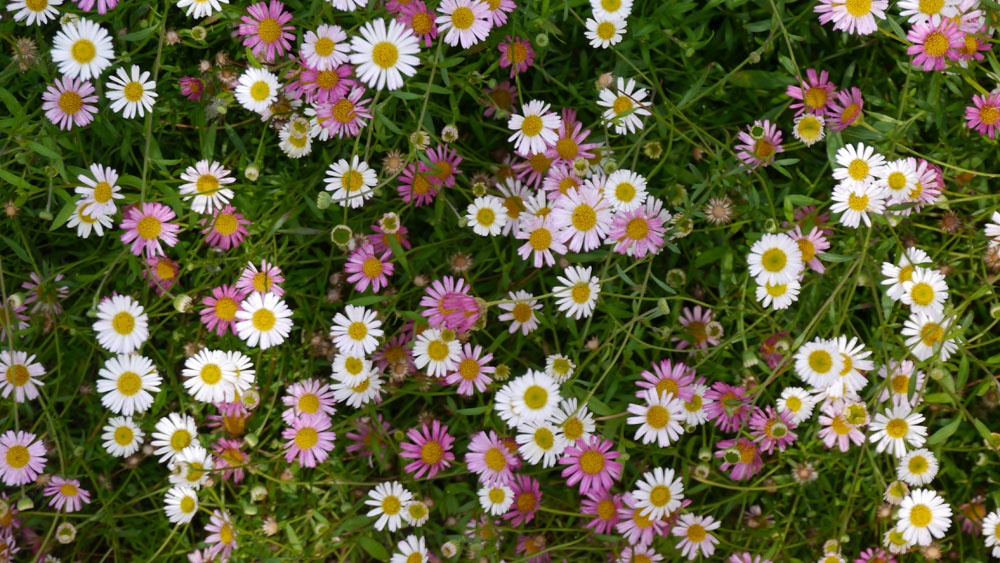Description
Erigeron – Fleabane –
There are about 200 species of annuals, biennials, and perennials, some of which are evergreen, in this genus. They occur in dry grassland and mountainous areas, with a very wide distribution, but most are found in North America. They range from low growing alpine species to taller, bushy clump forming plants. All have simple, rarely lobed or dissected, usually oblong to lance shaped or spoon shaped, mainly basal leaves, the leaves on the stems are usually shorter and narrower. Fleabanes are grown for their daisy like, single to semi double, mainly yellow centers, white, pink, blue, or purple, sometimes yellow or orange flowers, which are carried singly or in corymbs over long periods, mostly in summer. Grow erigerons in a mixed or herbaceous border, or in a rock garden. The flowers last well as cut flowers if they are picked when fully open. Believed that the flowers repel fleas.
Grow in moderately fertile, well drained soil that does not dry out in summer, in full sun with some mid day shade. The smaller alpine species need sharp drainage and protection from excessive winter moisture. Some may need staking. Cut back immediately after flowering to encourage compact growth and to prevent self seeding, deadhead to encourage further flowering. Divide every 2 or 3 years in late spring. Some can be invasive.
Prone to biden motte virus, downy mildew, powder mildew, rust, white smut, leaf spots, and Southern blight.
E. karvinskianus – E. mucroonatus – Mexican Daisy – Santa Barbara Daisy – Fleabane Daisy – This carpeting or mound forming, rhizomatous, woody based, vigorously spreading perennial found from Mexico to Panama grows 6-15″ tall and at least 36″ wide. It produces lax, branching stems that carry elliptic-lance shaped, hairy gray-green leaves, to 1 ½” long. In summer it bears abundant yellow centered flowers, to 1″ across, either singly or in loose corymbs of 2-5, opening white and fading through pink to wine-red. Suitable for a wall or paving crevices. Cut back hard time to time.
Zones 5-7





